Bokov la electrodynamics and propagation of radio waves. Electrodynamics and propagation of radio waves. Propagation of ultrashort waves within the line of sight
1.1 Electromagnetic field
The electromagnetic field consists of electric field, interdependent with the magnetic field. The electric field is represented by the electric induction vector, functionally dependent on the electric field strength vector  . Magnetic field represent the vector of magnetic induction
. Magnetic field represent the vector of magnetic induction  , functionally dependent on the magnetic field strength
, functionally dependent on the magnetic field strength  .
.
The vectors of the electromagnetic field in the general case represent a non-stationary electromagnetic vector field, which is a function of coordinates and time:


 - electrical induction;
- electrical induction;
 - magnetic induction.
- magnetic induction.
Stationary electromagnetic vector field, is a function of coordinates and does not depend on time:
 - electric field strength;
- electric field strength;
 - magnetic field strength;
- magnetic field strength;
 - electrical induction;
- electrical induction;
 - magnetic induction.
- magnetic induction.
The speed of propagation of electromagnetic waves in vacuum is equal to the speed of light
c = 3 10 8 m/s.
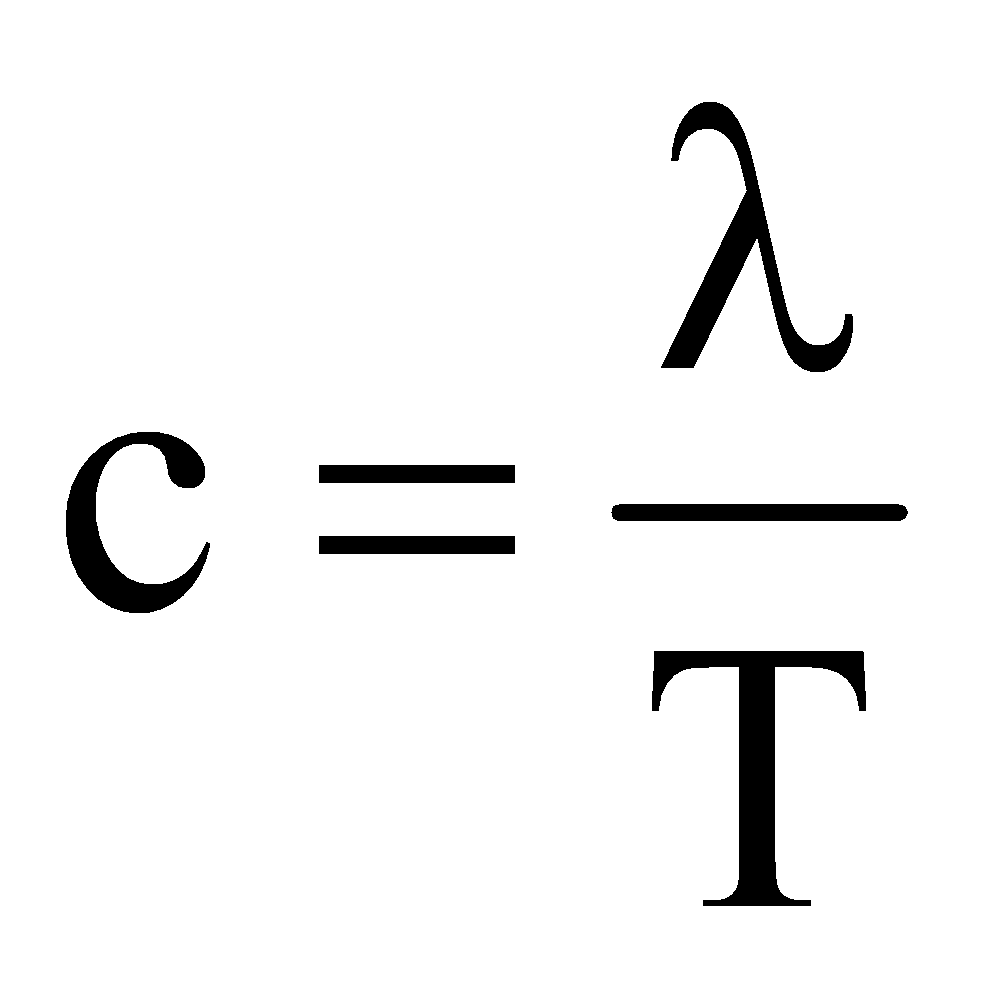
where λ is the wavelength, m;
T - period, s.
Frequency , Hz
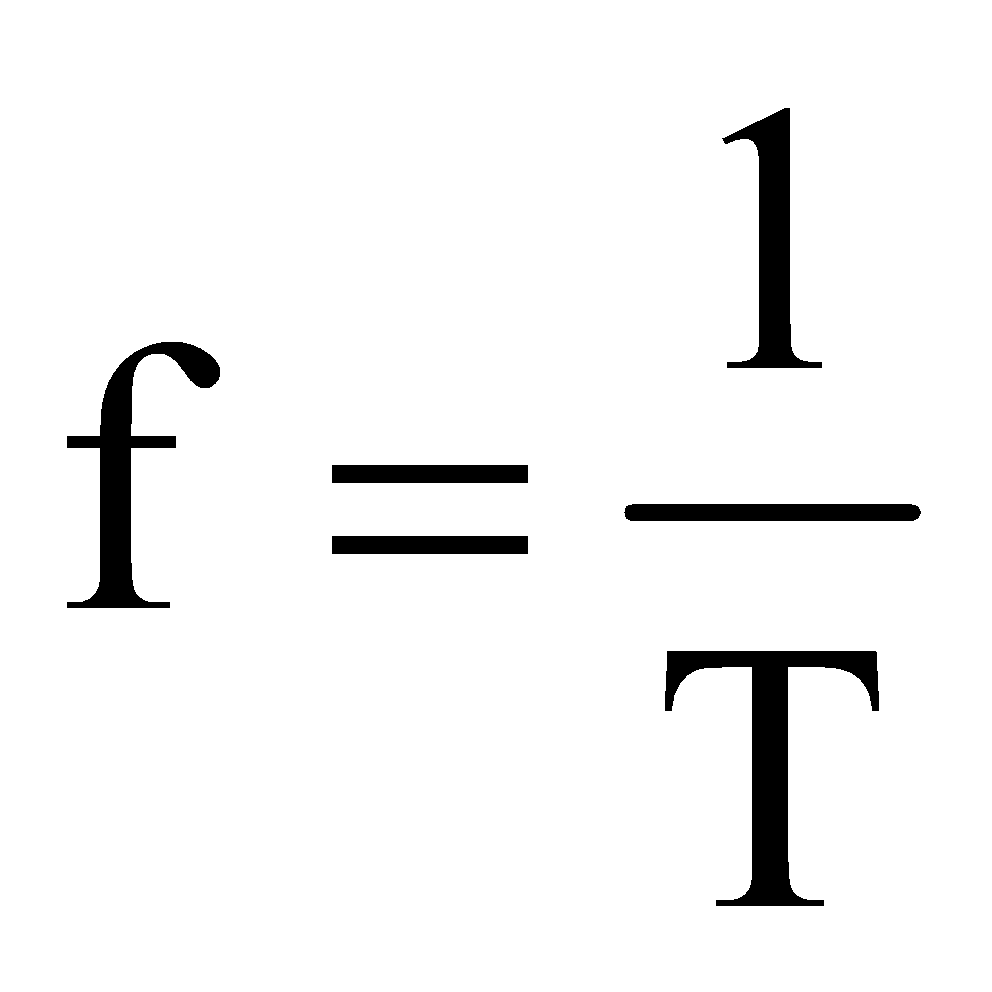
c = λf
Circular frequency, s -1
ω = 2πf .
The longer the electromagnetic wave length, the lower the frequency. Electromagnetic waves begin with a lower frequency, then radio waves begin in the ultra-long, long wave ranges, then medium waves with a higher frequency, short, ultrashort waves with an even higher frequency. Radio waves are followed by infrared radiation with a shorter wavelength but higher frequency than radio waves. Visible light begins with waves of red. The names of flowers begin with letters in the order of the saying: "Every hunter wants to know where the pheasant sits." Visible light ends in violet waves. This is followed by: ultraviolet, x-ray, gamma radiation and cosmic radiation.
The electromagnetic field theory is based on vector calculus and vector fields, the most important provisions of which will be discussed below.
1.2 Scalar and vector fields
1.2.1 Potential (irrotational) and vortex vector fields
Potential (irrotational) field linesstart at the source and end at the drain. The lines of the vortex (solenoidal) field have no sources, are always closed, continuous( see picture[ 4 ] ) .
R Figure - Potential (irrotational) and vortex fields
Vector circulation  potential field in a closed loopL zero
potential field in a closed loopL zero
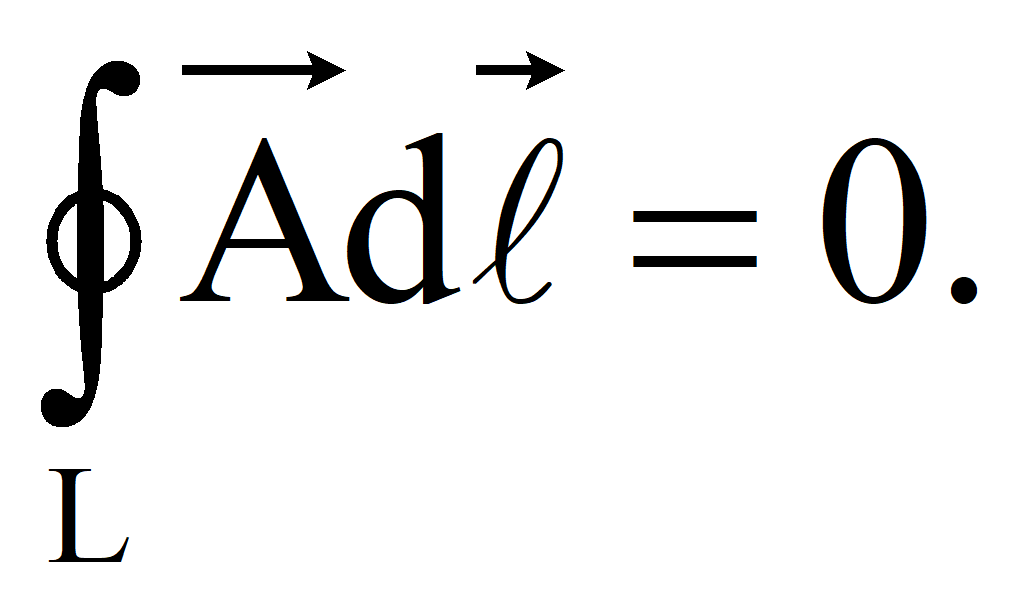
Flow vortex field vector through a closed surface Sequals zero

The electrostatic field can only be potential (irrotational), the magnetic field is only vortex.
1.2.2 Scalar field gradient, Hamilton operator
Gradient (difference) scalar fieldφ is a vector showing in which direction φ increases most rapidly, equal in magnitude to the derivative in this direction

Conditional vector or Hamilton operator

The gradient of the scalar field φ, written using the Hamilton operator ("nabla" operator)

The level surface φ contains the same values φ = const of the scalar field, so the gradient of the scalar field φ is perpendicular to the level surface φ and directed towards increasing φ (see figure [4]).
Figure - Gradient scalar field
1.2.3 Divergence (divergence)
Given a vector field at a point (x ; y ; z )
where  - unit vectors (orths) in the directions of the x, y, z coordinate axes, respectively.
- unit vectors (orths) in the directions of the x, y, z coordinate axes, respectively.
For a vector field at the point (x ; y ; z ) the divergence (divergence) at the point P is equal to the limit of the vector flow through the surface S, limiting scope V divided by V as V tends to zero
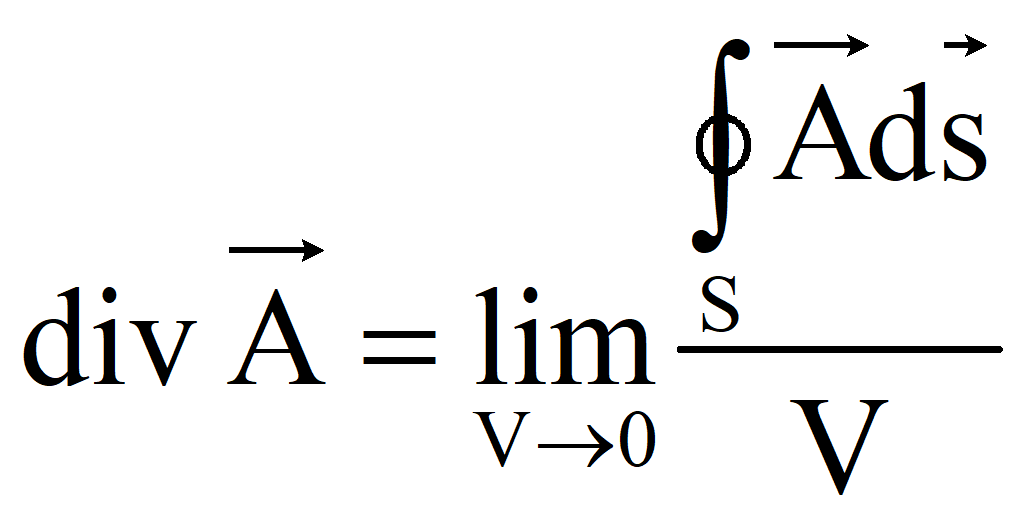


Divergence values in points P vector fields (see figure [ 4 ] ) .
Figure - Divergence values
When the divergence is greater than zero

inside region V are the sources of the vector field .
With negative divergence

inside region V are the sinks of the vector field .
With divergence equal to zero

with silt field lines permeate the area V or closed (vortex field).
1.2.4 Rotor (vortex)
The rotor (vortex) makes it possible to estimate the degree of rotation at some point ( x; y; z ) vector field
where are unit vectors (orths) in the directions of the coordinate axes x, y, z, respectively.
For a vector field at a point (x ; y ; z ) the projection of the rotor on the direction of the normal  to the surface , equal to the limit of vector circulation around the contour C, divided by areaΔ
S surface , bounded by the contour C, while striving Δ
S to zero
to the surface , equal to the limit of vector circulation around the contour C, divided by areaΔ
S surface , bounded by the contour C, while striving Δ
S to zero
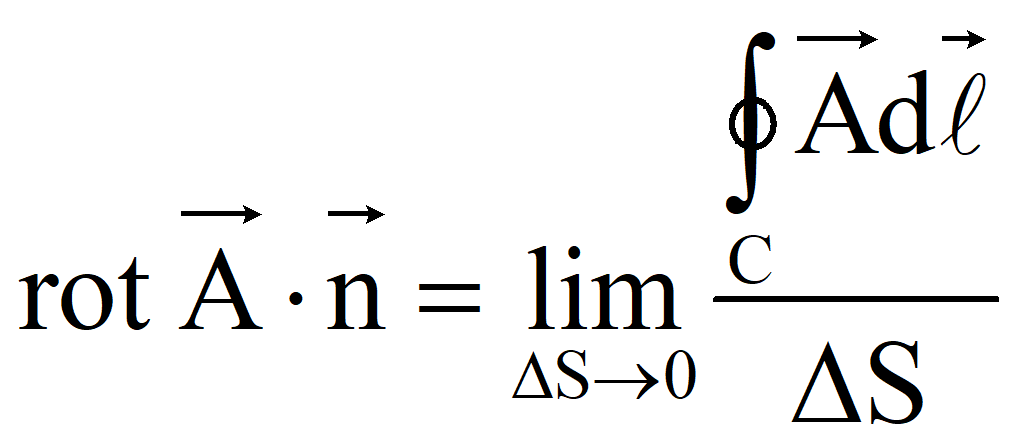
The direction of the normal is related to the direction of traversal of contour C by the rule of the right screw.
Rotor (vortex) of a vector field using the Hamilton operator
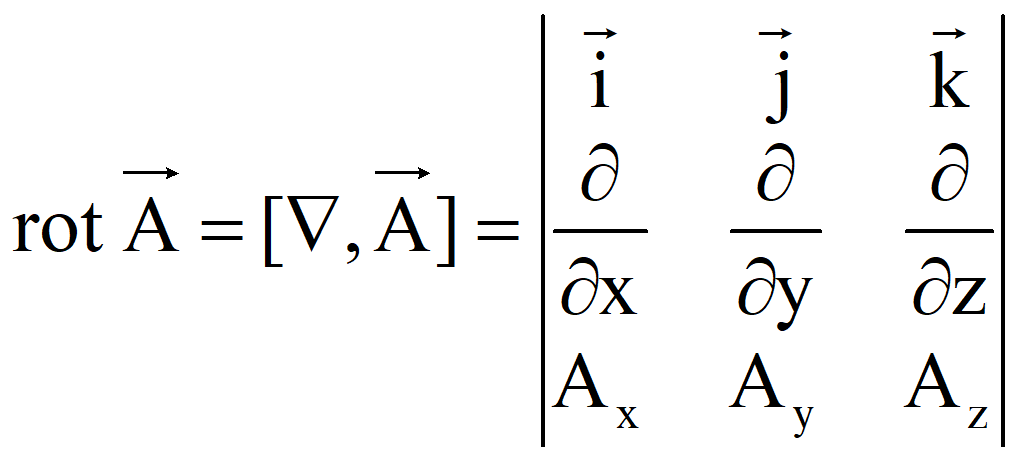
Vector projections  on the coordinate axis
on the coordinate axis



If at point P rotor is zero
 ,
,
then there is no rotation at this point and the vector field is potential.
1.3 Types of charge distribution
Volumetric charge density, C/m 3

Charge concentrated in volume V, C
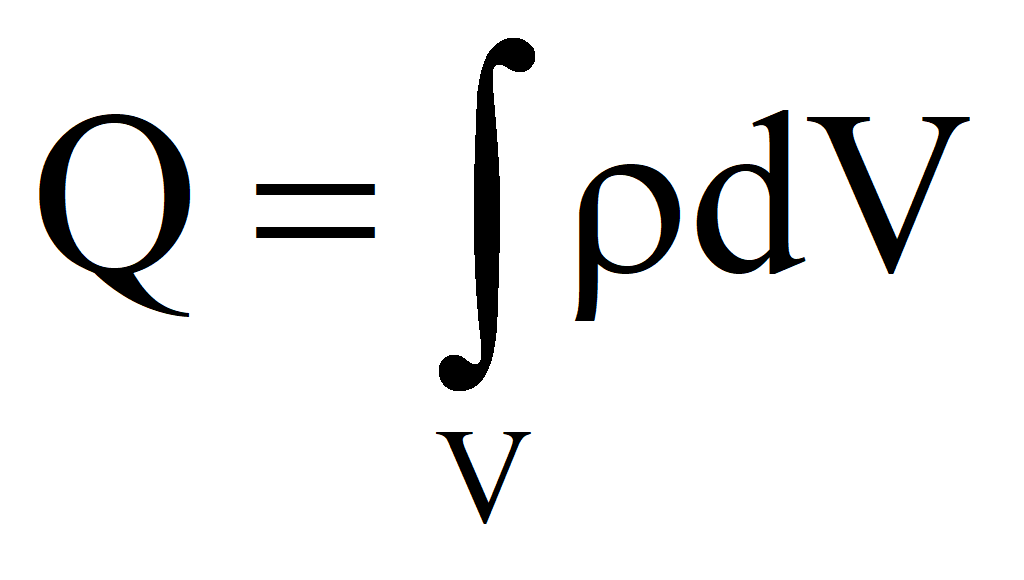
surface charge density, C/m 2

Charge concentrated on the surface S , C

liney charge density, C/m

Filament charge , Cl

The charge of point charges is equal to the sum of N charges of finite magnitude

1.4 Electric field
Vector of electrical displacement (electrical induction)  equal to the electric constant ε 0 times the bracket, in which the unit is added to the electric susceptibility χ e, multiplied by the electric field strength vector
equal to the electric constant ε 0 times the bracket, in which the unit is added to the electric susceptibility χ e, multiplied by the electric field strength vector 

Electrical constant

The vector of electrical displacement (electrical induction) in matter
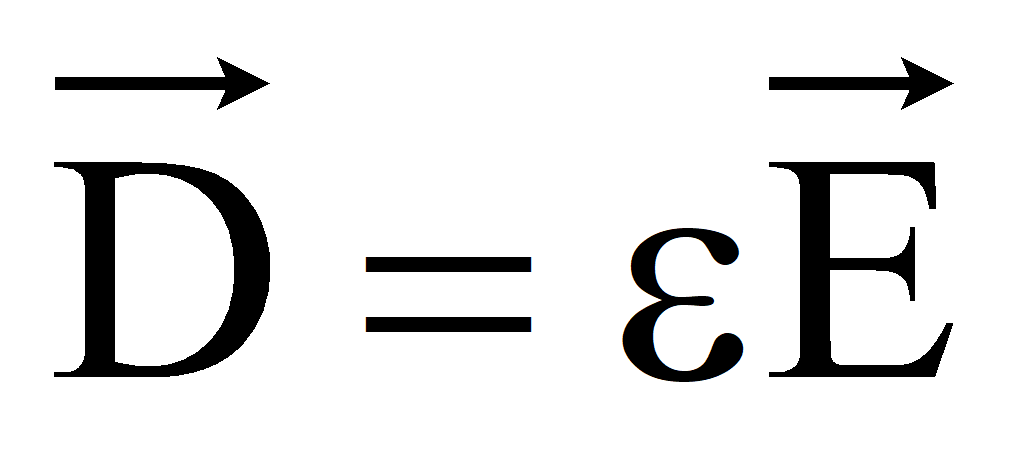
where ε - absolute electric permeability.
Vector of electrical induction in vacuum
 .
.
1.5 Magnetic field
Magnetic induction vector  is equal to the magnetic constant μ 0 multiplied by the bracket, in which the unit is added to the magnetic susceptibility χ m, multiplied by the magnetic field strength vector
is equal to the magnetic constant μ 0 multiplied by the bracket, in which the unit is added to the magnetic susceptibility χ m, multiplied by the magnetic field strength vector 

Magnetic constant
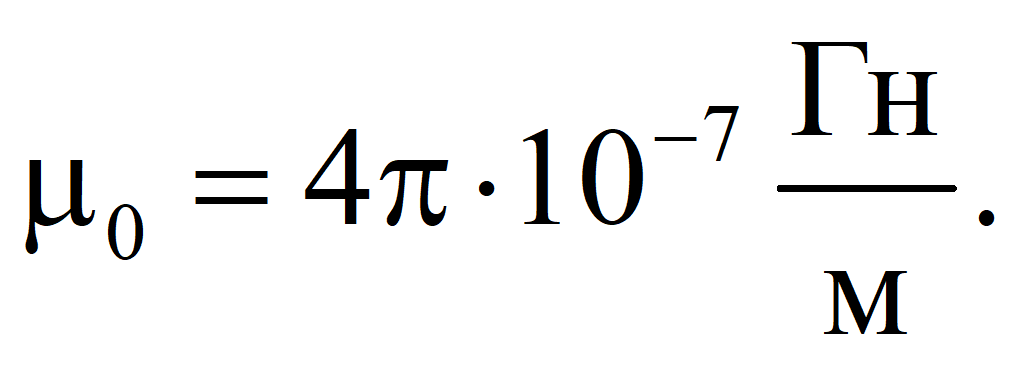
The vector of magnetic induction in matter

where μ - absolute magnetic permeability.
Vector of magnetic induction in vacuum
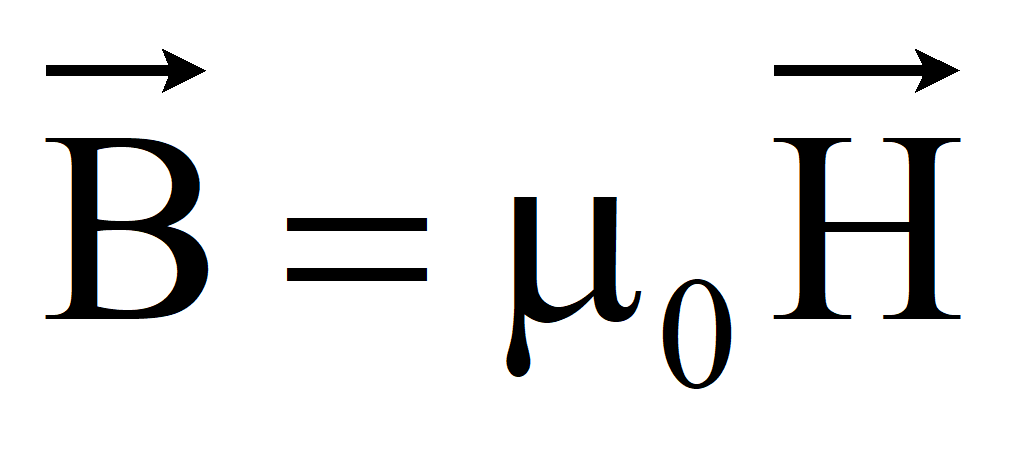
1.6 Ohm's law in differential form
Ohm's law for a circuit section
U=IR
current density
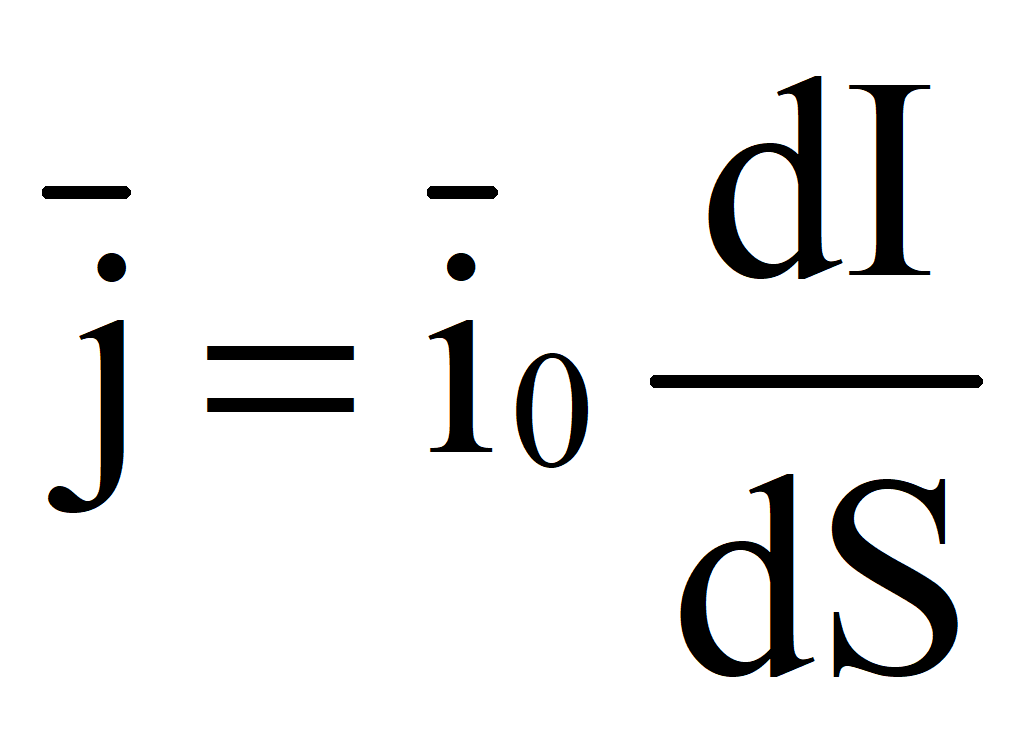
Express

We integrate over  and get the dependence of the current on the current density
and get the dependence of the current on the current density

Ohm's law in differential form allows you to determine the current density, A / m 2

where σ is the specific conductivity of the medium, S/m.
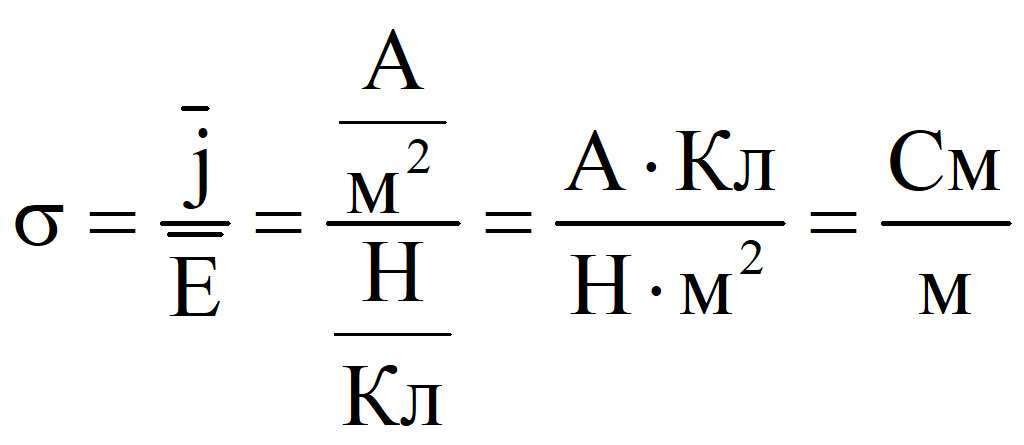
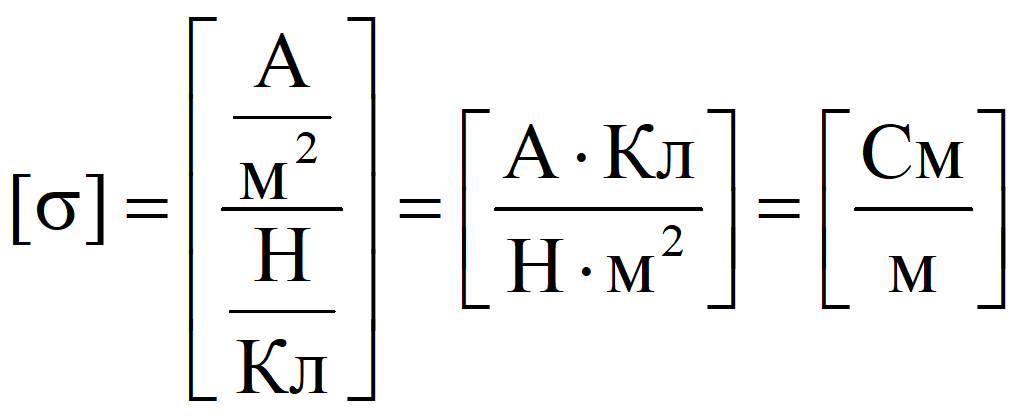
2 Maxwell's equations
Maxwell's system of equations in differential form describes variable electromagnetic fields
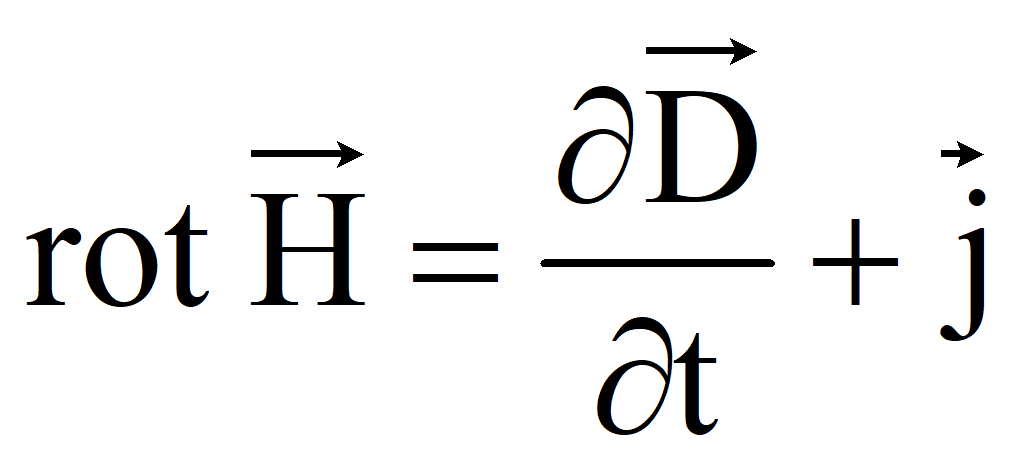
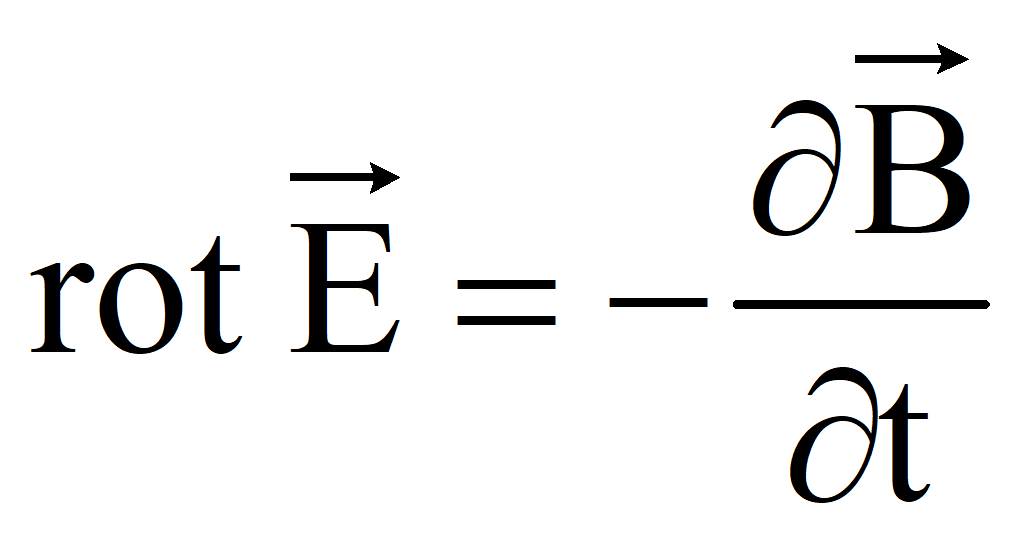

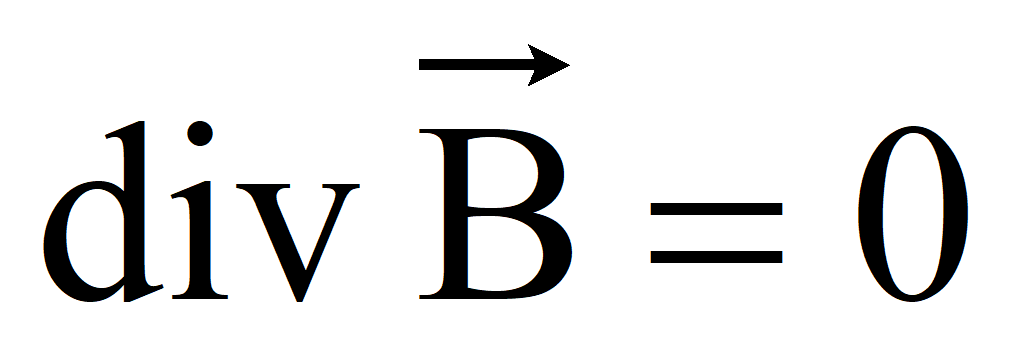
Vectors in Maxwell's equations represent a non-stationary electromagnetic vector field, which is a function of x, y, z coordinates and time t.
2.1 Special cases of electromagnetic phenomena
In particular cases, Maxwell's equations can be simplified.
2.1.1 Stationary electromagnetic field
A stationary electromagnetic field is created by direct currents and is described by vector functions of coordinates that do not depend on time:
Electric field strength;
Electrical induction;
Magnetic field strength;
Magnetic induction.
Vector functions do not depend on time, so the partial time derivatives in Maxwell's equations are equal to zero:
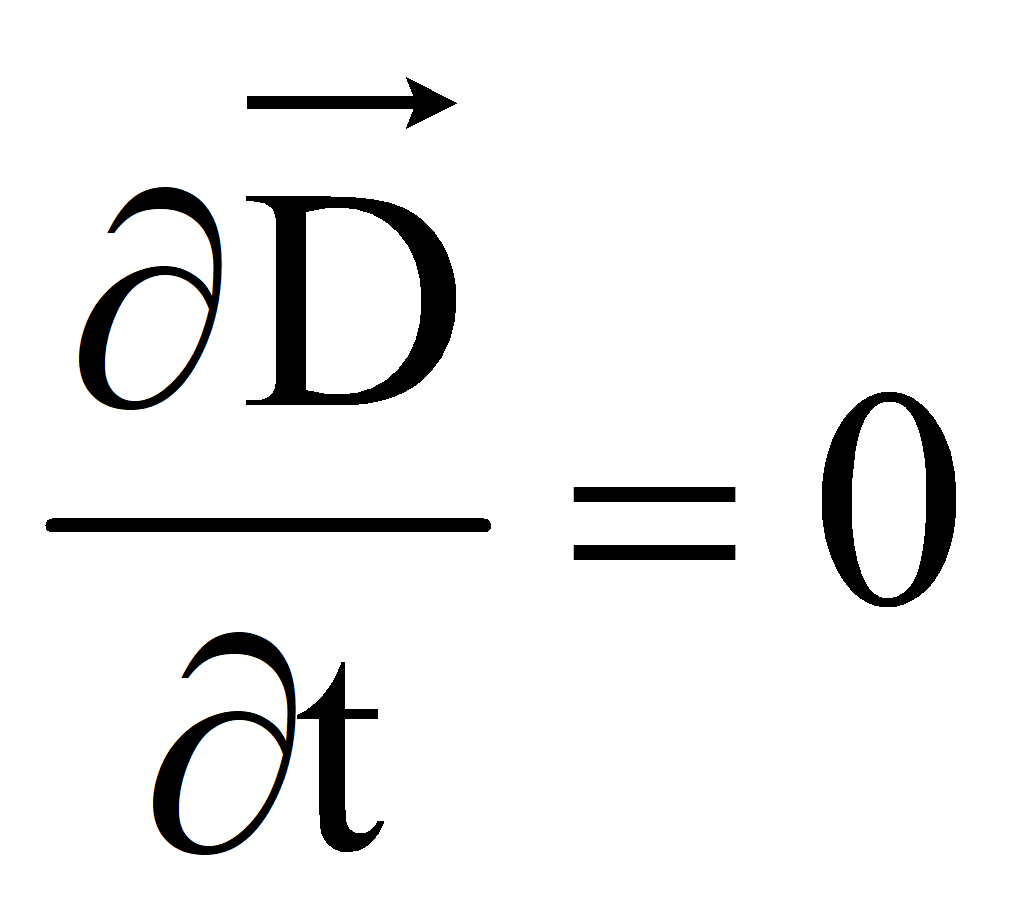

Maxwell's system of equations in differential form takes the form that describes a stationary electromagnetic field:
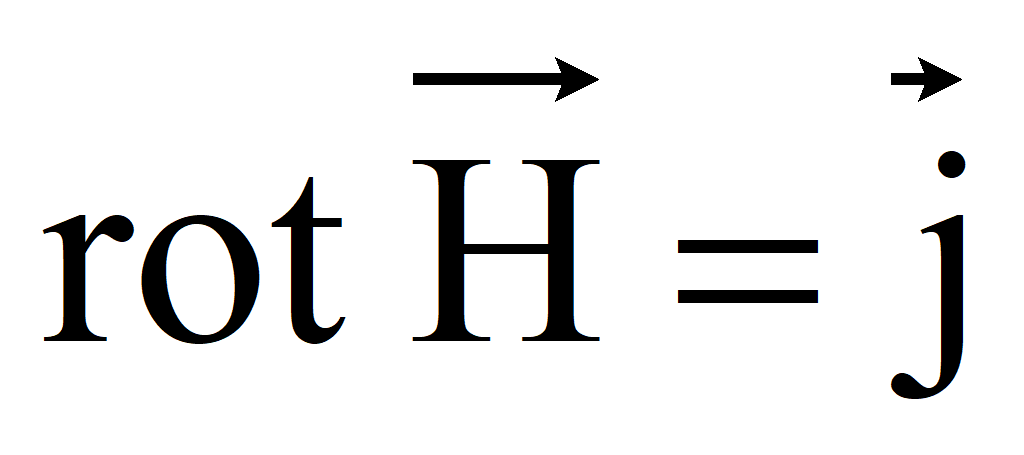

2.1.2 Static electric or magnetic fields
Static fields do not change with time and have no moving charges, hence no currents
 .
.
Maxwell's system of equations is divided into two independent systems of equations. The first system characterizes the electrostatic field and is called the system differential equations electrostatics
The second system of equations describes the magnetostatic field created by permanent fixed magnets

This system of equations can be used to describe magnetic fields created by direct currents, but in regions where the current density is zero, and which are not coupled to the current (do not span the current lines).
2.1.3 Maxwell's equations in complex form
If the electromagnetic field vectors change in time according to harmonic laws, then the system of Maxwell equations can be represented in a complex form that does not contain time for complex vectors

or complex amplitudes
2.1.4 Wave equations
From Maxwell's equations in complex form, expressing separately the equations for complex vectors  and
and  wave Helmholtz equations for vectors
wave Helmholtz equations for vectors


and complex amplitudes


where  - wave number, for vacuum
- wave number, for vacuum
 .
.
3 flat electromagnetic waves
At large distances from the source, the element of a spherical wave can approximately be assumed to be flat. Plane waves cannot be created by sources, they are invented to greatly simplify the theory of electromagnetic waves in individual cases.
The intensity vectors of the electric and magnetic fields of a plane wave are in-phase and oscillate along mutually perpendicular directions in a plane perpendicular to the direction of wave propagation. Such waves are transverse (see figure).
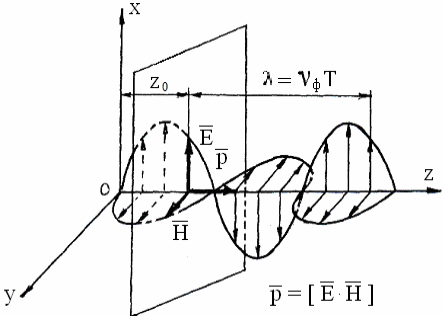
Figure - Instant picture of the distribution of electric and magnetic fields along the direction of propagation of a plane wave. In time, the field pattern moves in space with a phase velocity v f along the z axis
The wave front is the locus of field points with the same phase: for a plane wave (see figure), one of these surfaces is the plane z \u003d z 0, perpendicular to the direction of wave propagation. The field parameters do not change when moving within the wave front.
The front of a plane wave is a plane perpendicular to the direction of wave propagation. The field parameters do not change when moving within this plane, so the partial derivatives in the x and y directions are equal to zero:
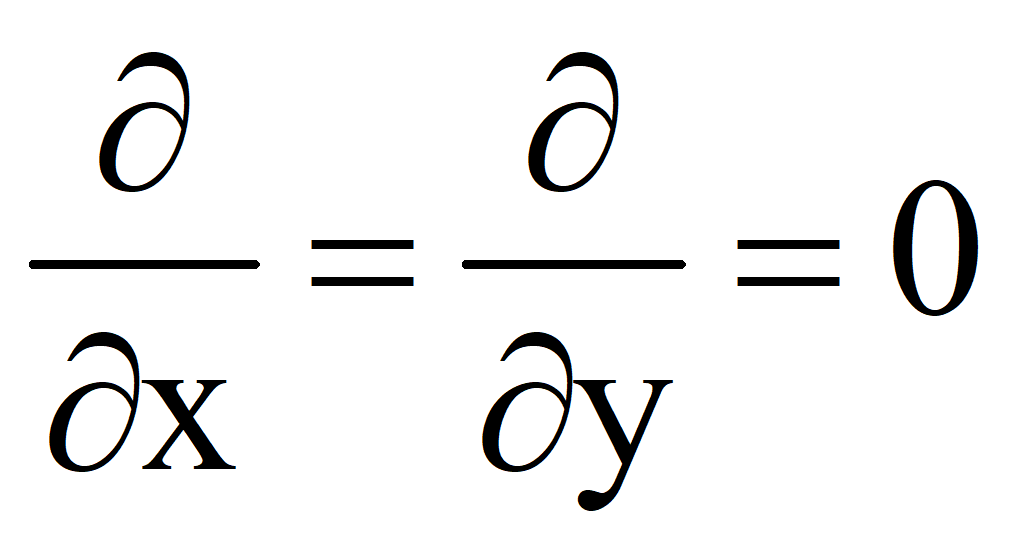

In wave Helmholtz equationsfor a plane wave become one-dimensional for vectors
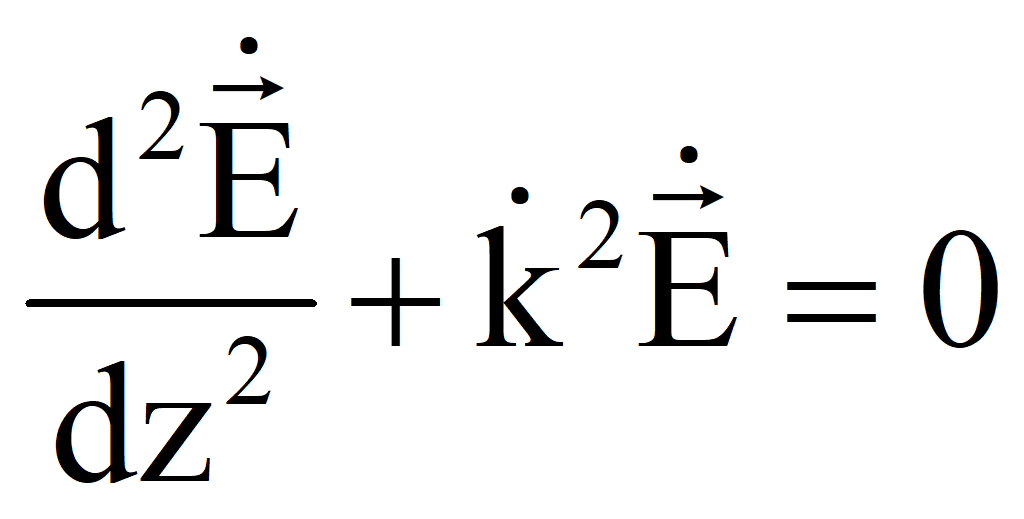
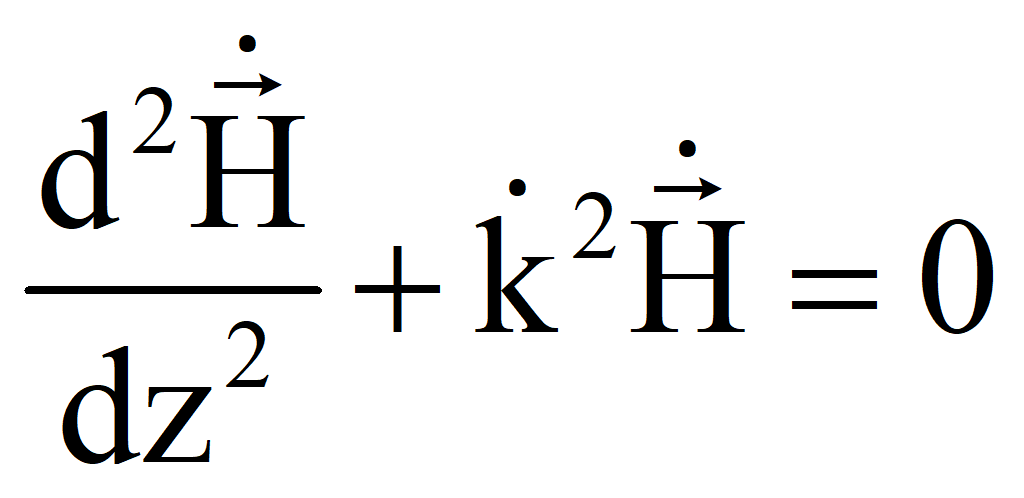
and complex amplitudes
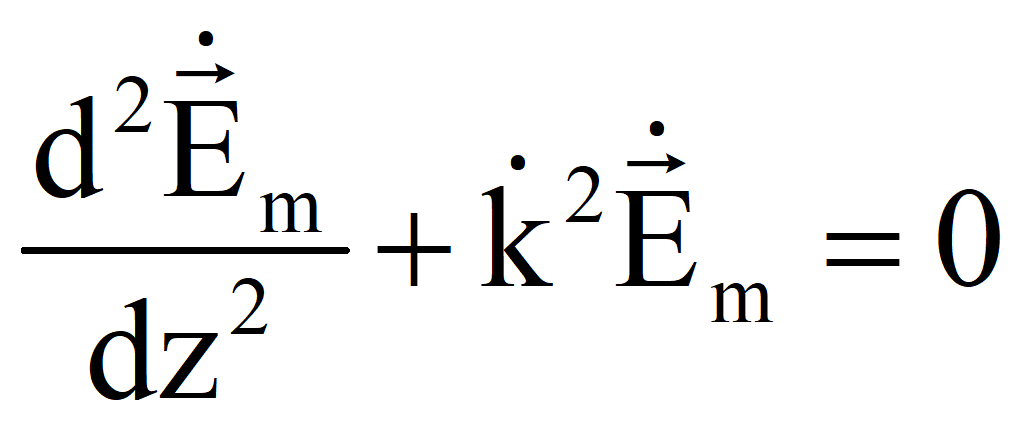

Solving differential equations for vectors
where  ,
,
 - orts in the direction of the vectors of electric and magnetic strengths, respectively;
- orts in the direction of the vectors of electric and magnetic strengths, respectively;
A, B, C, D - coefficients.
Real parts of vectors
Let us analyze the first term in the first equation. The figure shows the position of the electric field maximum at times t (point A) and t + Δ t.
Figure - The position of the maxima of the electric field
During Δ tthe maximum position has moved toΔ z,we can write the equation
A cos (ωt - kz ) = A cos (ωt + ωΔt - kz - k Δz ),
in which the arguments are equal
ω t − kz = ωt + ωΔt − kz − k Δz
0 = ωΔt - kΔz
ωΔt = kΔz.
From here we obtain the phase velocity v f - wave front velocity
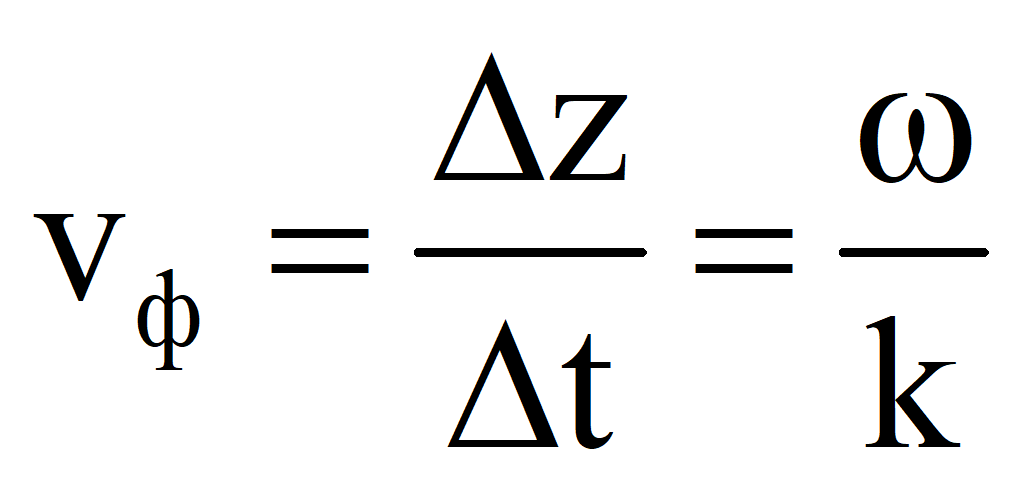
For vacuum
so the phase velocity in vacuum

Substitute the values of the constants

therefore, in vacuum, the speed of propagation of the wave front is equal to the speed of light.
Phase velocity in some medium

Phase velocity is independent of frequency.
Amplitudes of two points at a wavelength distance λ with phases differing by 2π are equal, so the equality
cos(ωt − kz) = cos(ωt − k(z + λ) + 2π),
in which the arguments are equal
ωt − kz = ωt − k(z + λ) + 2π,
ωt − kz = ωt − kz − kλ + 2π.
We cancel ω t − kz
0 = − k λ + 2π,
k λ= 2 π.
Hence the wavelength
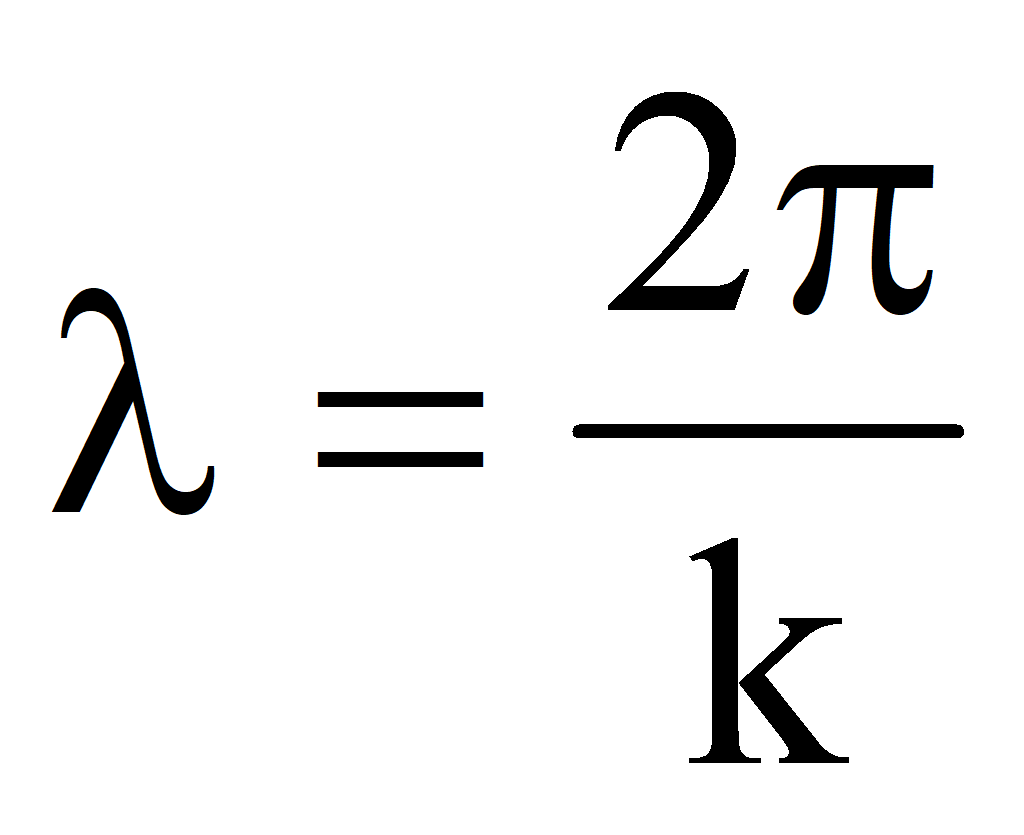
For an arbitrary environment
 ,
,
so the wavelength
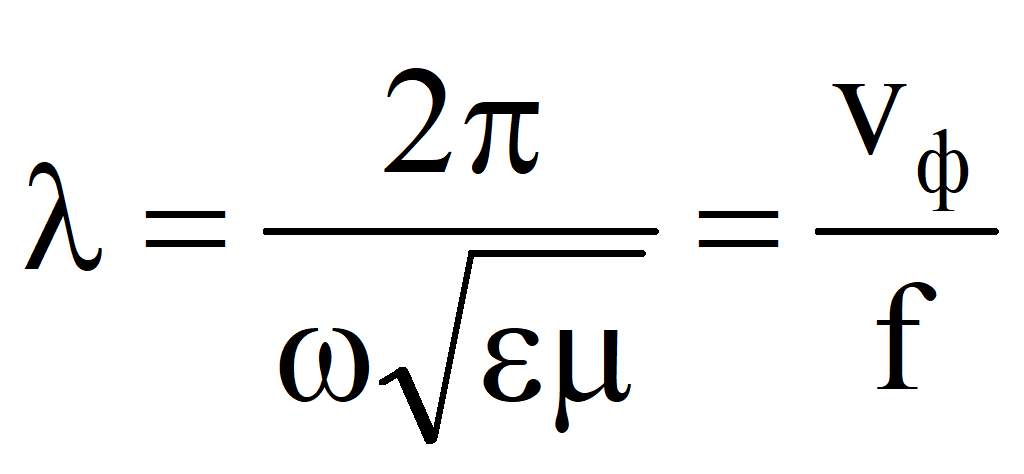
In a vacuum, the wavelength

Wavelength in other media
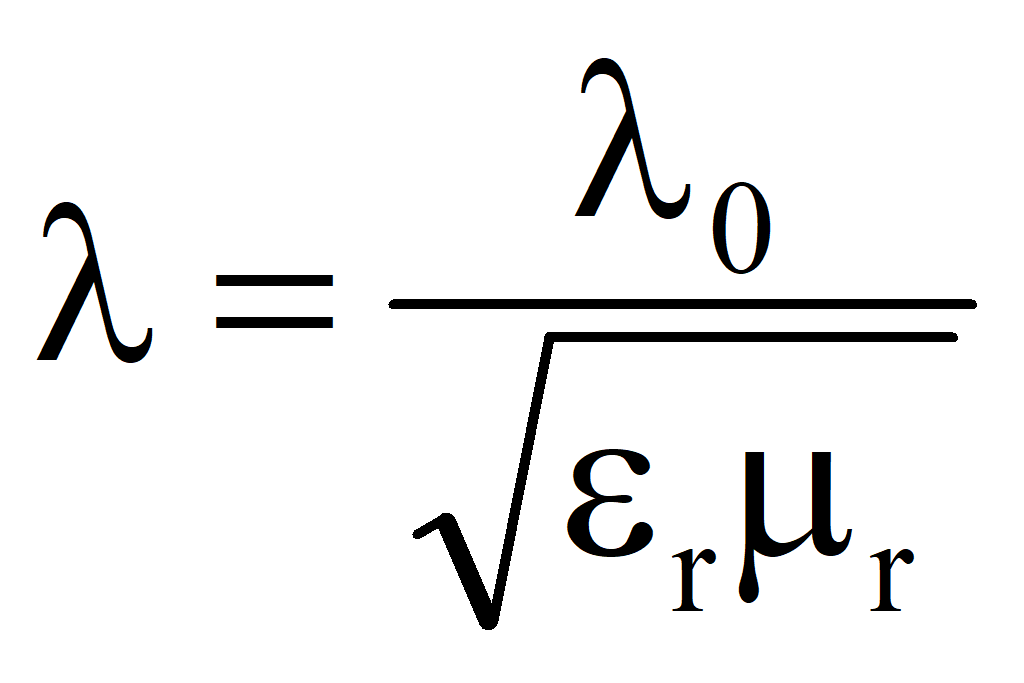
Vacuum impedance

For dry air, the same wave impedance is assumed.
4 Propagation of radio waves
All electromagnetic waves, including radio waves, propagate in vacuum at a speed of 3·10 8 m/s.
4.1 Propagation of radio waves in free space
Propagation of radio waves in the atmosphere, along earth's surface, in earth's crust, in the outer space of our galaxy and beyond, we will take for the free propagation of radio waves, which we will consider.
4.1.1 Classification of radio waves by bands
Radio waves have a frequency range from thousands of hertz to thousands of gigahertz: 3 10 3 - 3 10 12 Hz. Long waves have a lower frequency than short waves, which have a higher frequency.
The use of radio waves is possible due to the transmitter, the natural propagation medium of radio waves and the receiver, all together forming a radio link.
The earth's atmosphere and surface are absorbing, electrically inhomogeneous media, having a conductivity that is not constant in time and space, and a dielectric permittivity that depends on the frequency of propagating radio waves.
Therefore, radio waves were divided into frequency bands with approximately the same propagation conditions for radio waves within these frequency bands. The frequency bands are adopted by the International Radio Advisory Committee (CCIR) in accordance with the Radio Regulations.
For radio communication, optical waves are also used: infrared, visible and ultraviolet.
The power of electromagnetic waves depends on the frequency to the 4th power
P ~ ω 4 .
Waves with a higher frequency, but with a shorter wavelength, are able to have more power.
Antennas with a narrow radiation pattern are much larger than the wavelength, for high frequencies it is easier to make such high-performance antennas.
The higher the carrier frequency, the more independent modulated channels can be transmitted by such radio waves.
4.2 Provisions from antenna theory
The space around the antenna is divided into three regions with different structure of fields and calculation formulas: near, intermediate and far. In real communication lines, there is usually a far region (Fraunhofer zone) at distances from the antenna
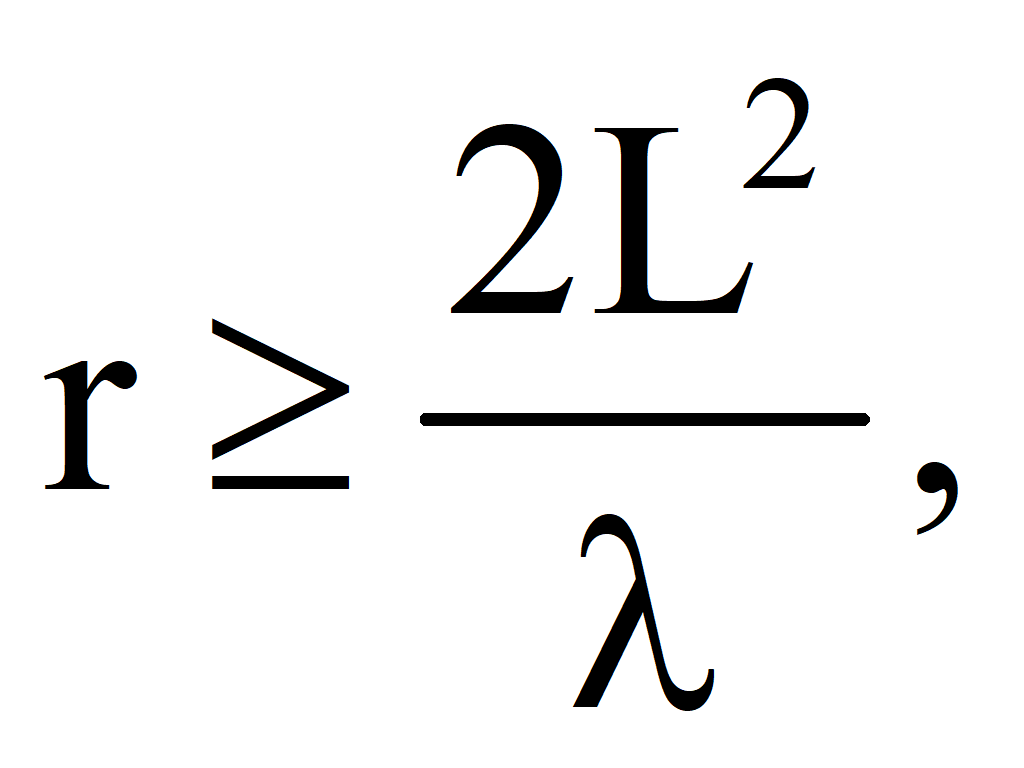
where L- maximum size of the radiating area of the antenna, m;
λ - wavelength, m
Characteristic (wave) resistance of a free medium

Pointing vector (Umov-Poynting vector), W/m2

where P - power, W;
r- distance from the antenna to the observation point, m
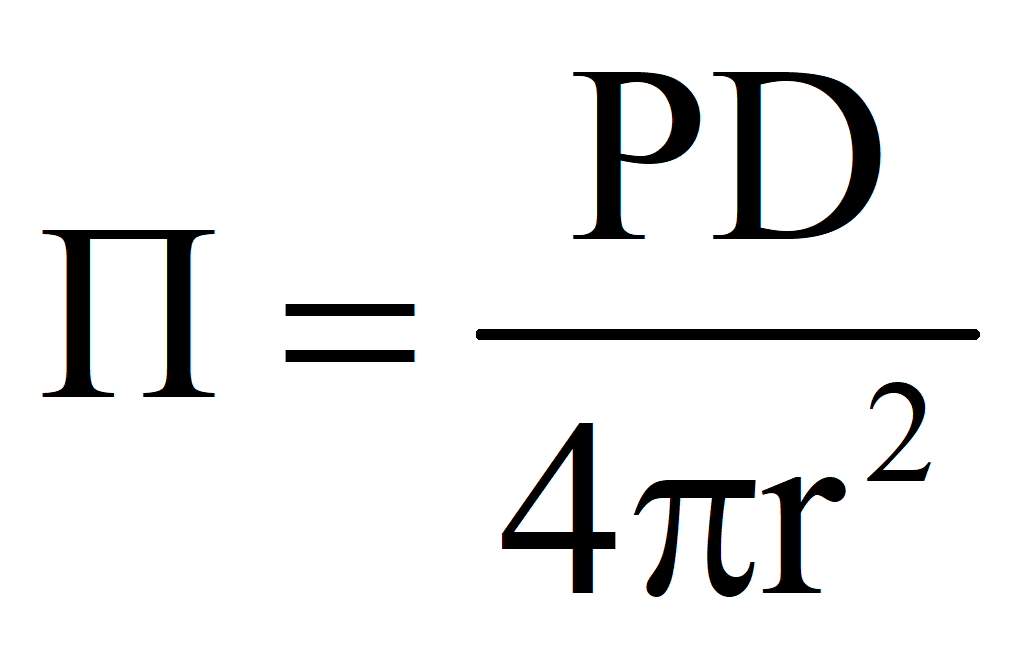
where D- directivity factor (DRC) of the antenna.
Average value of the Poynting vector in the far field

From the relation
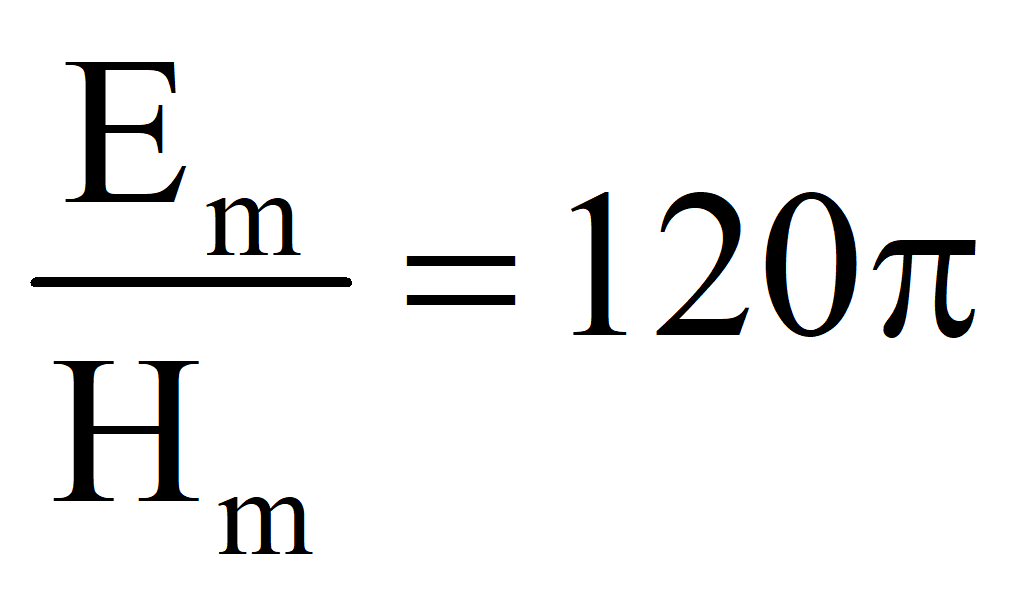
we express the amplitude of the magnetic field strength

Substitute
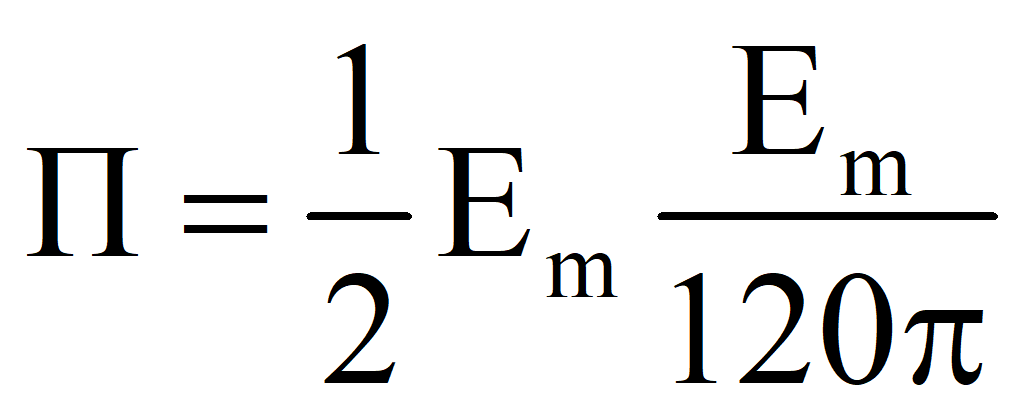
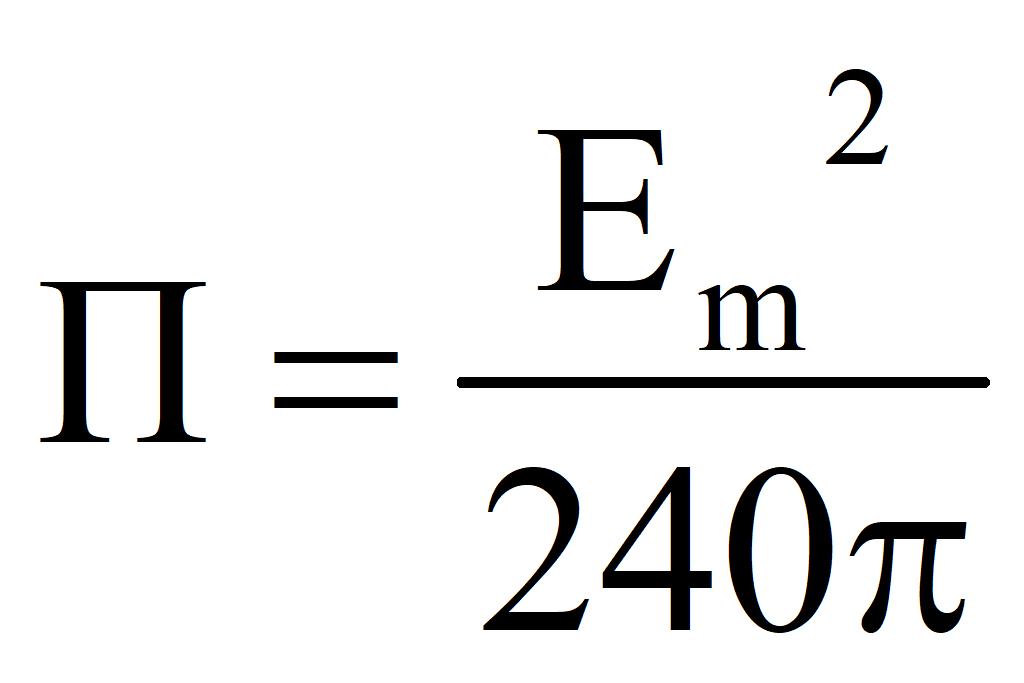
Equate the Poynting vectors

Let's cut
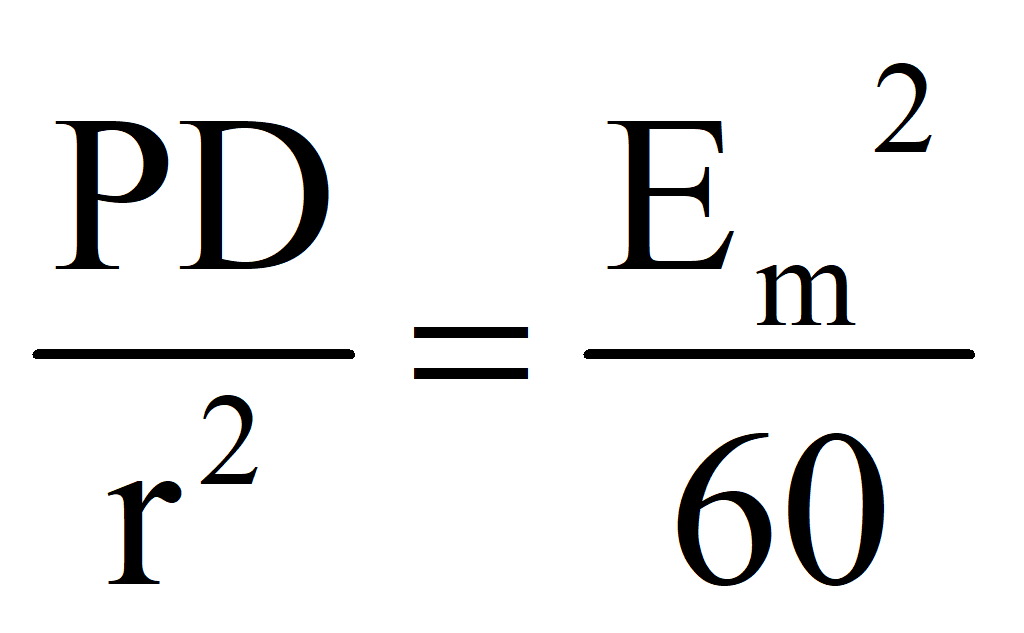
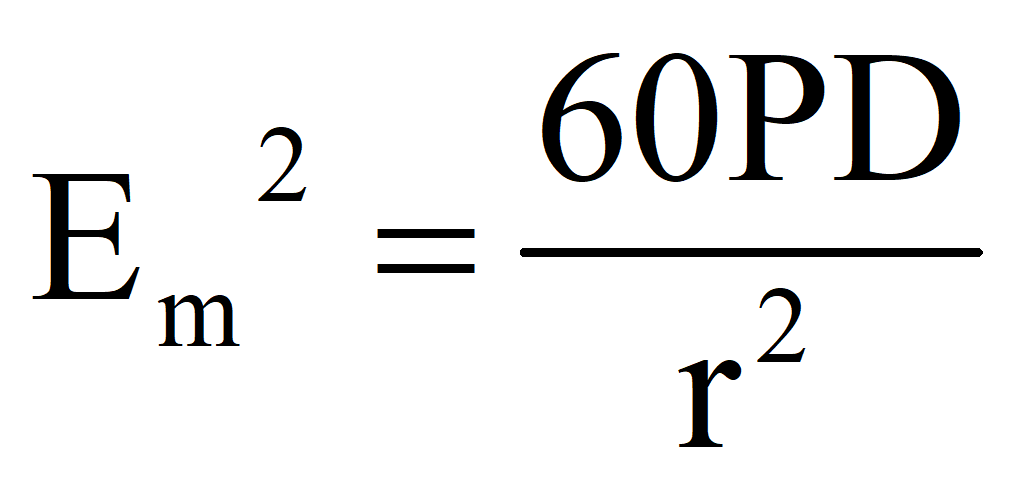
The amplitude of the electric field strength in the far field of the antenna in free space
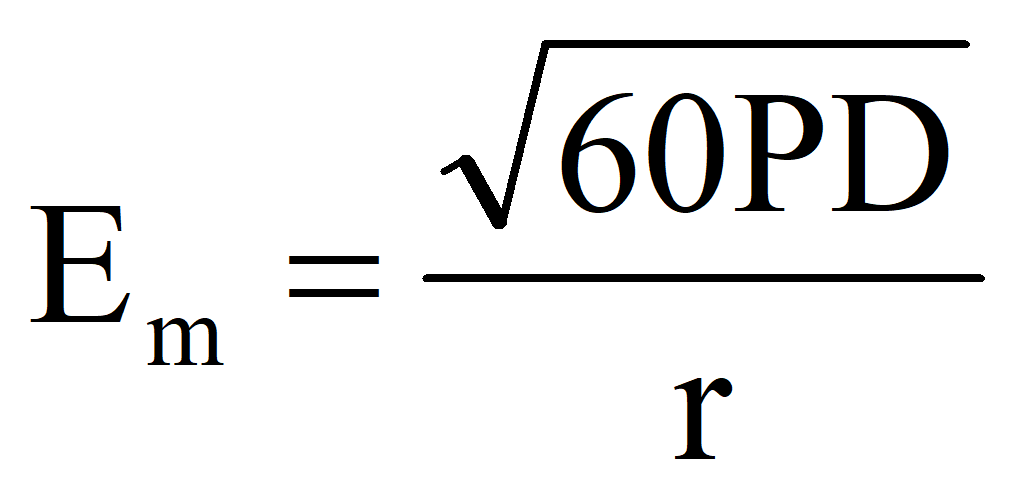
The field strength in other directions is determined using the antenna pattern F(θ,α), in which the angles θ and α in the spherical coordinate system (r,θ,α) define the direction to the observation point:

5 Propagation of radio waves of various bands
5.1 Propagation of ultra-long and long waves
Extra long waves (VLF) have a wavelength of more than 10,000 m and a frequency of less than 30 kHz. Long waves (LW) have a wavelength of 1000 to 10,000 m and a frequency of 300-30 kHz.
SWD and DW have a long wavelength, so they go around the earth's surface well. The conduction currents of these radio waves significantly exceed the displacement currents for all types of the earth's surface, so there is a slight absorption of energy during the propagation of a surface wave. Therefore, LLW and DW can propagate over distances of up to 3,000 km.
LWW and DW are weakly absorbed in the ionosphere. The lower the frequency of the radio wave, the lower the ionospheric electron concentration required to turn the radio wave towards the Earth. Therefore, the rotation of the VLF and DW occurs at the lower boundary of the ionosphere (during the day in the D layer and at night in the E layer) at a height of 80–100 km. The troposphere has practically no effect on the distribution of the LW and DW. Around the Earth, VLF and DW propagate, reflecting from the ionosphere and from the earth's surface in a spherical layer of 80-100 km between the lower boundary of the ionosphere and the earth's surface.
Communication lines on the LW and LW have a high stability of the electric field strength. During the day and year, the magnitude of the signal changes little, and also does not undergo random changes. Therefore, VLF and LW are widely used in navigation systems.
The limited frequency range (3-300 kHz) of VLF and LW does not allow placing even one television channel, which requires an 8 MHz band.
The large wavelength of VLF and LW dictates the use of bulky antennas.
Despite the shortcomings, VLF and LW are used in radio navigation, broadcasting, radiotelephone and telegraph communications, including with underwater objects, since these and optical waves are weakly absorbed in sea water.
5.2 Propagation of medium waves
Medium waves (MW) have a wavelength of 100 to 1,000 m, a frequency of 300 kHz to 3 MHz (0.3 - 3 MHz). Terrestrial and ionospheric SWs, which are used primarily in radio broadcasting, can propagate.
Terrestrial SW radio links are limited to a length of no more than 1000 km due to the significant absorption of SW by the earth's surface.
Ionospheric SW is capable of being reflected from the E layer ionosphere. Through the lowest layer D ionosphere, which appears only during the day, SW passes and is strongly absorbed in it,practically excluding communication during the day. Therefore, at night, the absorption of SW in the ionosphere decreases significantlyand at distances greater than 1000 km from the transmitter, communicationis being restored.
Due to the interference of ionospheric waves with each other or (and at night) with ground waves, random fading of the signal (fading) occurs. Anti-fading antennas have a maximum radiation pattern pressed to the earth's surface to combat fadingand cross modulation on SW.
5.3 Propagation of short waves
Short waves (HF) have a wavelength of 10 to 100 m (10 times shorter than medium waves), a frequency of 3 to 30 MHz (10 times the frequency of SW). HF is used primarily for broadcasting.
HFs are strongly absorbed by the earth's surface and poorly envelop the Earth's surface; therefore, terrestrial HFs propagate only for a few tens of kilometers.
HF experience absorption and pass through the lowest layers of the ionosphere D and E, but are reflected from the layer F.
The calculation of HF communication lines consists in drawing up a schedule of operating frequencies depending on the time of day (wave schedule).
5.4 Features of propagation of ultrashort waves
Ultrashort waves (VHF) have a wavelength of less than 10 m and a frequency of more than 30 MHz. In terms of frequency, VHF borders on HF from below, and on top of infrared waves. The ionosphere for VHF is transparent, therefore VHF lines are used mainly within the line of sight.
VHF have a large frequency range capable of transmitting significant amounts of information. On meter and decimeter waves, 297 television channels can be placed. Only 3 television channels will be placed in the entire shortwave range, and not a single one in the entire MW range.
The development of mobile and satellite communications, the Internet and the other reasons mentioned above are forcing radio technology to move to higher frequencies, so VHF is becoming increasingly important.
5.4.1 Line-of-sight propagation of ultrashort waves
VHF communication lines operating within the line of sight:
VHF and television broadcasting;
Radar stations (RLS);
Radio relay communication lines (RRL);
Communication with space objects;
Mobile connection.
5.4.2 VHF propagation beyond the horizon
Long-range propagation of VHF beyond the horizon line occurs in the following ways:
Due to scattering on inhomogeneities of the troposphere;
Superrefraction in the troposphere;
Scattering on inhomogeneities of the ionosphere;
Due to reflection from the layers of the ionosphere F 2 and E S ;
- due to reflection from meteor trails;
Thanks to the obstacle reinforcement (see figure)
Figure - Propagation of radio waves when amplified by an obstacle
List of symbols, symbols, units and terms
D,B - vectors of electric and magnetic induction
E, H - electric and magnetic field strength vectors
I(r, t) - electricity
j (r,t) − electric current density vector
P is the power of the electromagnetic field
M - magnetization vector
P - electric polarization vector
q - electric charge
ε,μ - absolute permittivity and permeability
ε 0 ,μ 0 − dielectric and magnetic constants
ε r ,μ r - relative permittivity and permeability
П - Poynting vector (Umov-Poynting vector)
ρ,ξ,τ - volume, surface and linear charge densities
σ is the specific conductivity of the medium
ϕ - scalar electrostatic potential
χ e, χ m - electric and magnetic susceptibility
W is the energy of the electromagnetic field
W e, W m - energies of the electric and magnetic fields
w is the energy density of the electromagnetic field
w e, w m - energy densities of the electric and magnetic fields
k - wave number
SDV - extra long waves
DW - long waves
MW - medium waves
HF - short waves
VHF - ultrashort waves
RLS - radar station
RRL - radio relay line
D - directivity factor (DNA) of the antenna
G - antenna gain
F(θ,α) - antenna pattern
R 0 - radius of the Earth (6371 km)
Z0 − wave resistance of free space
List of sources used
1. Electrodynamics and propagation of radio waves: textbook. allowance / L.A. Bokov, V.A. Zamotrinsky, A.E. Mandel. - Tomsk: Tomsk. state un-t control systems. and radioelectronics, 2013. - 410 p.
2.Morozov A.V. Electrodynamics and propagation of radio waves: a textbook for higher. military studies. institutions / Morozov A. V., Nyrtsov A. N., Shmakov N. P. - M .: Radio engineering, 2007. - 408 p.
3. Yamanov D.N. Fundamentals of electrodynamics and propagation of radio waves. Part I. Fundamentals of electrodynamics: Lecture texts. - M.: MGTU GA, 2002. - 80 p.
4. Panko V.S. Lectures on the course "Electrodynamics and propagation of radio waves".
Andrey Georgievich Olshevsky's consultations via Skype da .irk .ru
Theoretical foundations of electrical engineering (TOE), electronics, circuitry, fundamentals of digital, analog electronics, electrodynamics and radio wave propagation.
A clear explanation of the theory, the elimination of gaps in understanding, teaching methods for solving problems, consulting when writing term papers, diplomas.
Generation, implementation of ideas. Basics scientific research, methods of generation, implementation of scientific, inventive, business ideas. Decision training scientific problems, inventive problems. Scientific, inventive, writing, engineering creativity. Statement, selection, solution of the most valuable scientific, inventive problems, ideas.
Publications of the results of creativity. How to write and publish a scientific article, apply for an invention, write, publish a book. Theory of writing, defense of dissertations. Making money on ideas, inventions. Consulting in the creation of inventions, writing applications for inventions, scientific articles, applications for inventions, books, monographs, dissertations. Co-authorship in inventions, scientific articles, monographs.
Preparation of students and schoolchildren in mathematics, physics, computer science, schoolchildren who want to get a lot of points (part C) and weak students for the OGE (GIA) and the exam. Simultaneous improvement of current performance through the development of memory, thinking, an understandable explanation of the complex, visual presentation of objects. A special approach to each student. Preparation for the Olympiads, providing benefits for admission. 15 years of experience in improving student achievement.
Higher mathematics, algebra, geometry, probability theory, mathematical statistics, linear programming.
Aircraft, rocket and automobile engines. Hypersonic, ramjet, rocket, impulse detonation, pulsing, gas turbine, reciprocating internal combustion engines - theory, design, calculation, strength, design, manufacturing technology. Thermodynamics, heat engineering, gas dynamics, hydraulics.
Aviation, aeromechanics, aerodynamics, flight dynamics, theory, design, aerohydromechanics. Ultralight aircraft, ekranoplans, airplanes, helicopters, rockets, cruise missiles, hovercraft, airships, propellers - theory, design, calculation, strength, design, manufacturing technology.
Theoretical mechanics (theormech), strength of materials (sopromat), machine parts, theory of mechanisms and machines (TMM), engineering technology, technical disciplines.
Analytical geometry, descriptive geometry, engineering graphics, drafting. Computer graphics, graphics programming, drawings in AutoCAD, NanoCAD, photomontage.
Logic, graphs, trees, discrete mathematics.
OpenOffice and LibreOffice Basic, Visual Basic, VBA, NET, ASP.NET, macros, VBScript, Basic, C, C++, Delphi, Pascal, Delphi, Pascal, C#, JavaScript, Fortran, html, Matkad. Creation of programs, games for PC, laptops, mobile devices. Use of free ready-made programs, open source engines.
Creation, placement, promotion, programming of sites, online stores, earnings on sites, Web-design.
Informatics, PC user: texts, tables, presentations, training in typing for 2 hours, databases, 1C, Windows, Word, Excel, Access, Gimp, OpenOffice, AutoCAD, nanoCad, Internet, networks, e-mail.
Device, repair of stationary computers and laptops.
Video blogger, creating, editing, posting videos, video editing, making money on video blogs.
Choice, goal achievement, planning.
Learning to make money on the Internet: blogger, video blogger, programs, websites, online store, articles, books, etc.
Skype: da.irk.ru
Sites: www.da.irk.ru
01/11/18 Olshevsky Andrey Georgieviche-mail:[email protected]
You can support the development of the site using the payment form below.
You can also pay for consulting and other services of Olshevsky Andrey Georgievich
Article
- djvu format
- size 922.8 KB
- added February 05, 2010
Zaboronkova, T. M. Fundamentals of electrodynamics and propagation of radio waves:
educational and methodical manual / T. M. Zaboronkova, E. N. Myasni-
cov. - Nizhny Novgorod: Publishing house of FGOU VPO "VGAVT", 2009. - 133 p.
Content:
Static electric and magnetic fields,
electrostatic field,
direct current,
stationary magnetic field,
Movement of charged particles in constant electric and magnetic fields,
Electromagnetic field, Maxwell's equations,
Law of electromagnetic induction,
Displacement current, Maxwell's system of equations,
Averaged Maxwell-Lorentz equations in material media,
Boundary conditions for electric and magnetic fields,
Electromagnetic waves in free space,
Plane monochromatic electromagnetic wave,
Polarization of electromagnetic waves,
Spherical electromagnetic waves in free space,
Radiation of electromagnetic waves by an elementary vibrator,
Electromagnetic waves in homogeneous material media,
Electromagnetic waves in a homogeneous isotropic dielectric,
Electromagnetic waves in a medium with absorption,
The dispersion of the permittivity,
Propagation of packets of electromagnetic waves group velocity,
The transfer of energy by a packet of waves,
Dispersion and resonant absorption of molecular gas
Electromagnetic waves in plasma,
Parameters of the ionospheric plasma,
Electromagnetic waves in a homogeneous isotropic plasma,
Electromagnetic waves in a homogeneous magnetoactive plasma,
The incidence of electromagnetic waves on the interface of homogeneous media,
Reflection and refraction of waves from a flat interface between two media,
Reflection from a perfectly conducting surface,
Reflection from an imperfect conductor,
Propagation of electromagnetic waves in a smoothly inhomogeneous medium,
Smoothly inhomogeneous medium, geometrical optics approximation,
Refraction of radio waves in the Earth's atmosphere,
Reflection of radio waves from a layer of inhomogeneous plasma. ,
Features of the reflection of radio waves from the ionosphere when taking into account the magnetic field,
Interference and diffraction of electromagnetic waves,
Interference of plane monochromatic waves,
Huygens-Fresnel-Kirchhoff principle,
Fraunhofer diffraction,
Fresnel Diffraction,
Diffraction of radio waves on random inhomogeneities of electron density,
Propagation of radio waves in the Earth's atmosphere
Ideal radio path, radio wave bands,
The influence of the underlying surface on the propagation of radio waves,
The influence of the troposphere on the propagation of radio waves,
Propagation of radio waves in the ionosphere.
Similar sections
see also

Babaenko L.A. Electrodynamics and propagation of radio waves Part 1
- pdf format
- size 582.45 KB
- added September 06, 2011
Textbook SPbSPU 2006 55 pages. part 1 The abstract of lectures (part I) corresponds to the group of sections of the discipline "Electrodynamics and propagation of radio waves" of the directions of preparation of bachelors 552500 "Radio engineering", as well as the specialty 2015000 "Household radio-electronic equipment". The basic equations of electrodynamics, boundary conditions for electromagnetic field vectors, energy characteristics, static and stationary...

Babaenko L.A. Electrodynamics and propagation of radio waves, part 2
- pdf format
- size 509.49 KB
- added September 06, 2011
Textbook SPbSPU 2006 42 pages. part 2 The abstract of lectures (part 2) corresponds to the group of sections of the discipline "Electrodynamics and propagation of radio waves" of the directions of preparation of bachelors 552500 "Radio engineering", as well as the specialty 2015000 "Household radio-electronic equipment". The formulation of problems of electrodynamics, electromagnetic waves in various environments,Wave phenomena at the interface between two media Designed for students...

Babaenko L.A. Electrodynamics and propagation of radio waves, part 3
- pdf format
- size 529.18 KB
- added September 06, 2011
Textbook SPbSPU 2006 49 pages. part 3 L.A. Babenko. Electrodynamics and propagation of radio waves. Basic equations of electrodynamics. Static and stationary fields. Lecture notes. Part 3 The abstract of lectures (part 3) corresponds to the group of sections of the discipline "Electrodynamics and propagation of radio waves" of the bachelor's training areas 552500 "Radio Engineering", as well as the specialty 2015000 "Household radio-electronic equipment". Consider...

Baskakov S.I. Electrodynamics and propagation of radio waves. (textbook + task book)
- djvu format
- size 12.97 MB
- added March 11, 2010
Two files: a textbook and a problem book. 1. Baskakov. Electrodynamics and propagation of radio waves. 1992. 2. Baskakov. Collection of tasks on the course "Electrodynamics and propagation of radio waves". 1981 1. Baskakov. Electrodynamics and propagation of radio waves: The fundamentals of macroscopic electrodynamics, the theory of plane electromagnetic waves in various media, methods for calculating waveguide and oscillatory systems, as well as devices for emitting and receiving electromagne...

Dolukhanov M.P. Propagation of radio waves
- djvu format
- size 3.81 MB
- added Jan 06, 2009
Publishing house "Communication", Moscow 1972. In the book, along with general issues of radio wave propagation, propagation over the flat and smooth spherical surfaces of the Earth, over uneven terrain is considered in detail; the influence of the troposphere on the propagation of ground waves is analyzed; the processes of propagation of tropospheric waves and absorption of radio waves in the troposphere are considered. Questions of the structure of the ionosphere and the propagation of radio waves in it are outlined. Other...

Lectures - Electrodynamics and Radio Wave Propagation
Article- doc format
- size 1.98 MB
- added December 26, 2009
Vladimirsky State University(VlSU). Lecturer: Gavrilov V. M. 184 pp. Electromagnetic field and media parameters. Basic equations of electrodynamics. Border conditions. The energy of the electromagnetic field. Electrodynamic potentials of a harmonic field. Plane electromagnetic waves. Propagation of radiowaves in various media. Wave phenomena at the interface between two media. surface effect. Elemental Emitters. Main te...

